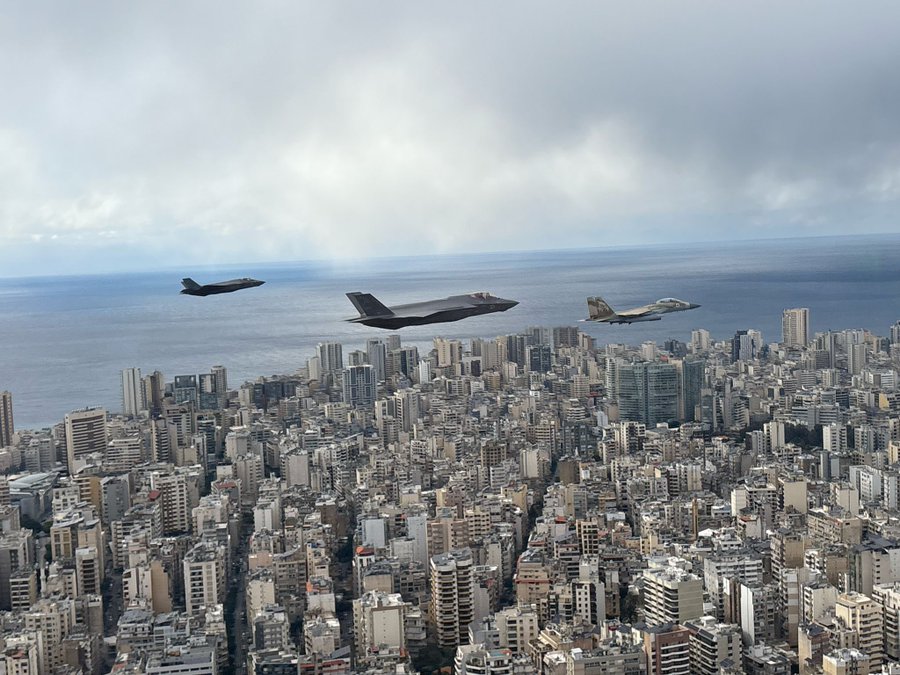Much of the news in Lebanon on Sunday was expected to be centered around the funeral for former Hezbollah leader Hassan Nasrallah, who was killed in late September by an Israeli airstrike. The Lebanon news never strays too far from active Israeli action, however.
Israeli warplanes were seen overhead at the Beirut stadium where the funeral was held. Israeli DM Israel Katz says the warplanes send “a clear message” that anyone threatening Israel will meet their end.
But a lot more than a big funeral and Israeli warplanes menacing a big funeral was happening. At least seven Israeli airstrikes were reported Sunday, mostly in the south, but also in the east along the Lebanon-Syria border.

Israeli Air Force jets over Beirut During Hassan Nasrallah’s Funeral. State of Israel public release
Casualty figures are still coming in, though a Syrian girl was reported among the injured in the airstrike against Qlyaaa, in the Marjayoun District of Nabatieh Governorate. Five other strikes were centered around the South Governorate, with a seventh strike reported near Hermel in the Bekaa-Hermel Governorate along the Syrian border.
The South Governorate was clearly the main focus of the strikes, with four of the five strikes there hitting the Tyre District, at Zibqin, Jannata, Deir Qanoun al-Naher and Maaroub, respectively. The fifth strike was in Zrariyeh, in the South’s Sidon District.
It’s not at all clear what exactly was hit in all of these strikes yet, though Israel has claims they were attacking “Hezbollah targets,” and suggested that some of those sites they strikes may have even had rocket launchers within.
Israel further claimed the existence of the targets they decided to attack was a “violation of the understandings” of the ceasefire with Lebanon, though clearly directly striking several targets in Lebanon and having warplanes overfly a major event on the outskirts of Lebanon’s capital city are much more visible and verifiable violations that anything Hezbollah is purported to have done.


